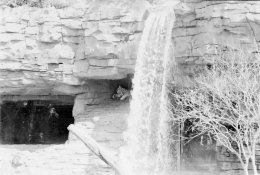This is sort of continuation of what was being discussed in (there was a url link here which no longer exists), but I figured others may find it useful as an independent thread.
So I understand you can develop color film (both slides and negatives) as B&W first, and then see if you want to take it further. I also found good (generic) info about it at filmrescue.com.
I get lots of exposed film through garage sales and people giving it to me as they know I'm into photography. I've just been holding onto it up until this point, as I really don't want to spend the money to have it developed. But I just started developing B&W, so I think I'd like to try and run a roll of color through the B&W process.
So my question is, how do you do it? I have HC-110, and Tmax developer. I've only used the HC-110 so far, with good results. I use the time chart from the Mass Dev Chart, but I believe all the film there is B&W, so where do I start with times/temps/etc? My first attempt will be with a partially exposed roll of Kodak Gold 200 (GB). AFter that, who knows what I'll do, as I have tons of all different types in a box waiting.
Thanks in advance!
So I understand you can develop color film (both slides and negatives) as B&W first, and then see if you want to take it further. I also found good (generic) info about it at filmrescue.com.
I get lots of exposed film through garage sales and people giving it to me as they know I'm into photography. I've just been holding onto it up until this point, as I really don't want to spend the money to have it developed. But I just started developing B&W, so I think I'd like to try and run a roll of color through the B&W process.
So my question is, how do you do it? I have HC-110, and Tmax developer. I've only used the HC-110 so far, with good results. I use the time chart from the Mass Dev Chart, but I believe all the film there is B&W, so where do I start with times/temps/etc? My first attempt will be with a partially exposed roll of Kodak Gold 200 (GB). AFter that, who knows what I'll do, as I have tons of all different types in a box waiting.
Thanks in advance!


















